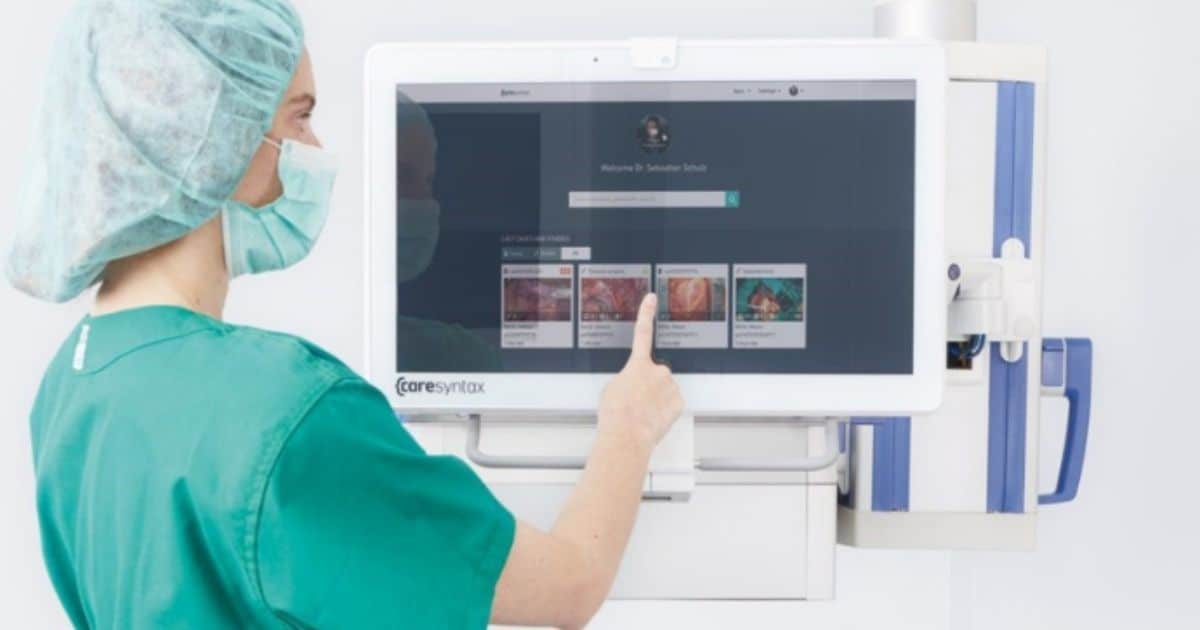
Video
University of Iowa Hospitals and Clinics Embrace Data-Driven Healthcare
Watch Now

Caresyntax Article
November 9, 2020
During the onset of the COVID-19 pandemic, hospital admissions fell precipitously in the US. In the week of April 11, hospital admissions dropped to as low as 68% of predicted admissions. Some hospitals reported operating at less than 50% capacity. The drop in volumes was largely due to hospitals intentionally curtailing elective surgery and other non-critical medical treatment.
Firstly, it led to a shutdown of ORs. From early on hospitals filled up their capacities not only with active COVID-19 cases but also freed up space for pre-emptive occupation. While this was far-seeing against the backdrop of the pandemic’s dynamic nature, it was problematic for elective surgeries. On the one hand, it led to severe capacity constraints for hospitals. On the other, it led to the postponement of millions of elective surgeries.
Back in May, the University of Birmingham estimated that over 28 million elective surgeries across the globe could be canceled as a result of the pandemic. As of now 38% of global cancer surgeries have been postponed or canceled. The study further estimates that it will take around 45 weeks to clear the backlog of operations.
The side effects of the delay of surgeries are complex. Due to the inability to receive treatment, patients’ medical conditions get worse. Moreover, the diagnoses of severe illnesses (often discovered within the OR) have dropped significantly. A recent study found that the number of newly identified patients with breast cancer dropped by 52% in the US throughout spring. The study sums it up well:
While residents have taken to social distancing, cancer does not pause.
The diffusion of cancer didn’t just drop year-on-year by 52%. Here a lack of discovery is at play. Another side effect is higher surgical complication rates as a result of patients’ worsening medical conditions. The more advanced a severe illness, the higher the risk for surgical complications.
Access to surgical expertise is the second major area hit by COVID-19. During the onset of the pandemic, when many countries went into lockdown, it was difficult for crucial healthcare stakeholders to access the OR. Two groups were severely constrained in their ability to perform their tasks: (1) sales representatives from MedTech companies that are needed to install crucial medical equipment and (2) specialist surgeons that previously traveled to hospitals to carry out surgeries.
In short, the essence of COVID-19’s impact on ORs can be boiled down to the triad of: (1) hospitals having to deal with limited OR capacities, (2) more difficult surgeries due to higher risks of complications, and (3) restricted access to surgical expertise.
As elective procedures are more frequently postponed, the relative amount of complex and urgent procedures increases. Yet in times of constrained OR capacities, it is crucial to perform these difficult procedures at the highest efficiency, as in the OR, quality and efficiency go hand in hand. Efficiency-enhancing measures, such as the automatic control of a checklist-guided process, the adherence to clinical guidelines, and the diligent recording of adverse events enable hospitals to achieve the best possible outcomes. We, at Caresyntax, provide caregivers with access to these essential activities through our data-driven surgical safety platform.
Let’s consider the case of Australia for a second. The country has largely barred its citizens from leaving their states. If there were a surgeon from Melbourne that had to fly to Sydney to conduct a surgery, it would have been close to impossible for him to leave Victoria during the height of the pandemic – and operate. The surgery would either go ahead without his expertise or would be postponed. A scenario with two suboptimal healthcare outcomes.
Yet this is where Caresyntax’s data-driven surgery platform provides a solution, as it enables physicians and care personnel to manage critical medical equipment from any location. The tool’s fully integrated telemedicine module enables the seamless knowledge exchange to leverage surgeons’ expertise from a distance. In the scenario of the Australian surgeon unable to fly to Sydney, he simply dials into the OR through PRIME365. Thereby, he is able to communicate with fellow surgeons and monitor the surgery closely through PRIME365’s installed IoT extensions, such as high-res cameras. In the era of teleproctoring, distance is no longer an obstacle.
As a result of this autumn’s second wave of COVID-19, hospitals across Europe are once again forced to postpone a larger number of surgeries to keep sufficient intensive care beds available for coronavirus patients. Yet, (fortunately) the reserved intensive care capacities were only used to a limited extent for treating COVID-19 patients in many regions, including Germany.
Due to the high costs associated with the low occupancy of ICU beds, many hospitals will be faced with the balancing act of gradually decreasing the backlog of surgeries, while at the same time remaining prepared for a wave of COVID-19 patients.
In an environment like this, forward-looking, flexible, and data-driven capacity management is a must. Our data-driven surgery platform offers just this. The tool enables hospitals to optimize their personnel, equipment, and room capacities by 15% in times of shortage. The feedback we have heard from surgeons has been outstanding. Gail Pietrzyk, Corporate Director of Surgical Services at Universal Health Services in King of Prussia, Pennsylvania, said: “Periop Insight™ gives us forecasting ability with Operating Room capacity, and prediction capability with the extension of normal hours and days. The ability to predict and manage blocks is beneficial to efficient hospital operations in general, but particularly valuable during challenging times.”
Reinhard Wichels, Managing Director at WMC Healthcare, further stressed: “The decisive task within the next few months will be to restore confidence and regular operations in the hospitals. This will require close coordination between outpatient and inpatient care, health authorities, and scientists. Caresyntax’s platform-oriented approach is an excellent way to enter into an exchange with the various players in the healthcare system”